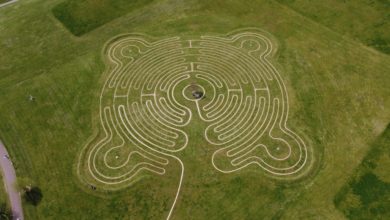
Narrative Job Hunting – Turning Passion into Profession
In an age where job markets are saturated and opportunities seem scarce, there’s an element that stands out when it comes to securing that coveted position—your story. It’s not just about having the necessary skills or qualifications; it’s about how you package those skills into an engaging narrative, how you turn your passion into your profession. Welcome to the art of storytelling in job interviews.
Let’s be honest, we’ve all been there. Seated across from a panel of stern-faced professionals, trying to sell ourselves in a way that’s both honest and impressive. We recite our rehearsed lines, our hands shaking as we try to convince our interviewers—and ourselves—that we’re the right person for the job. However, it’s no secret that facts alone don’t resonate; people remember stories. Stories engage us, evoke emotions, and, most importantly, stories stick.
And so, the question arises: how can you tap into the power of storytelling in job interviews? To answer this, we turn to the experts.
“Storytelling is a powerful tool that can bring your resume to life,” states LinkedIn’s career expert Andrew Seaman. “A candidate who tells a compelling story about their experiences is more likely to stand out from the competition.”
His views are backed by LinkedIn’s data, revealing that recruiters are 20% more likely to take note of candidates who provide comprehensive, narrative-driven profiles.
The first step towards effective storytelling is understanding your own narrative. This isn’t a concocted tale for the sake of impressing your interviewer—it’s your personal journey. Reflect on your past experiences, your triumphs and trials, your motivations and aspirations. These are the elements that will shape your story.
Consider a job interview as a movie, and you’re both the protagonist and the director. You’ve got the reins, and it’s your responsibility to guide the narrative. HR professional and acclaimed author, Liz Ryan, puts it eloquently, “You are the storyteller and the story. Your task is to bring the listener into your world.”
But how can you translate your experiences into a compelling narrative? The answer lies in the STAR method—Situation, Task, Action, and Result. It’s a proven strategy used by professionals across the globe to structure their responses in a cohesive, impactful manner.
Start by describing the Situation you faced, then outline the Task you were responsible for. Detail the Action you took to tackle the situation, and finally, reveal the Result. This method provides a clear, easy-to-follow structure that allows your interviewer to visualize your experiences and comprehend your problem-solving process.
However, the art of storytelling goes beyond structure—it’s about engaging your audience. The renowned career coach Richard Leider suggests, “We are all wired for narrative. We look for intention, coherence, and meaning. In an interview, your goal is to weave your facts into a narrative that connects with the interviewer on an emotional level.”
This emotional connection can be achieved by integrating your passion into your narrative. Let’s take a cue from Steve Jobs, who once said, “The only way to do great work is to love what you do.” Jobs didn’t just build revolutionary products; he conveyed his passion, his vision, and his relentless drive for innovation. His story resonated with millions around the globe, proving that passion, when channeled effectively, can inspire and captivate.
As you construct your narrative, remember to align it with the company’s values and mission. Show them how your personal journey, your skills, and your passion would contribute to their story. This creates a sense of synergy between you and the potential employer, painting a picture of a mutually beneficial relationship.
Dr. Robert Cialdini, a professor of Psychology and Marketing, emphasizes the influence of similarity in persuasion. In his book “Influence: The Psychology of Persuasion,” he writes, “We like people who are similar to us. This fact seems to hold true whether the similarity is in the area of opinions, personality traits, background, or lifestyle.” Applying this principle to your interview storytelling, demonstrate how your values align with those of the company, fostering a sense of kinship with the interviewer.
Crafting a narrative that showcases your passion and how you have channeled it into your profession can make a lasting impression. It can be the difference between being just another face in the crowd and being the candidate that resonates, the candidate they remember.
To encapsulate, storytelling in job interviews is about creating a compelling narrative that showcases your skills, passion, and alignment with the company’s values. It’s about humanizing your experiences, inspiring your interviewer, and ultimately, securing that job offer.
In the words of Maya Angelou, “People will forget what you said, people will forget what you did, but people will never forget how you made them feel.” As you venture into your next job interview, remember the power of storytelling. Make them feel your passion, your drive, your resilience. Transform your job interview from a mere conversation into a captivating story. This is the art of turning passion into profession. This is how you stand out.
And so, as you walk into your next job interview, remember this: you’re not just a candidate; you’re a storyteller. Your story has the power to inspire, to engage, and most importantly, to get you that job. So, take the stage, share your narrative, and watch as your passion transforms into your profession.




